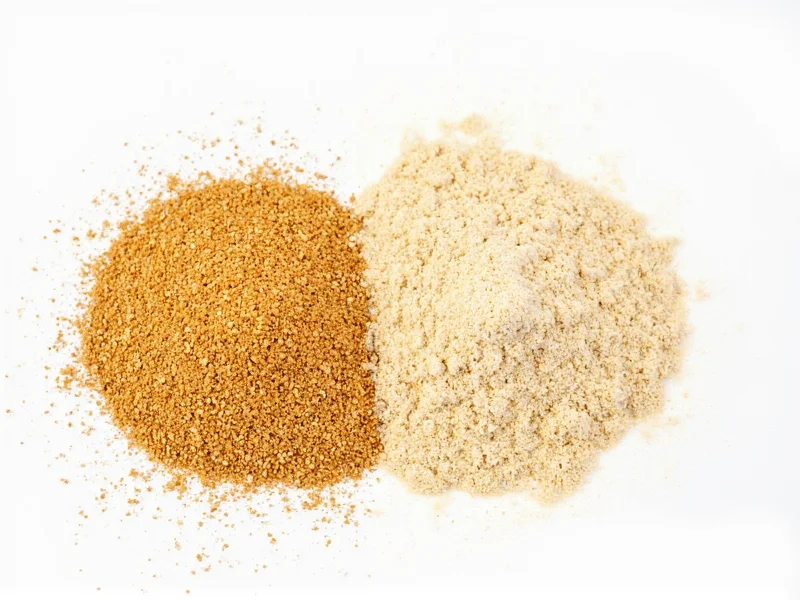Understanding the practical differences between granules and powder forms is essential across multiple industries from pharmaceuticals to food production. These particle forms represent fundamentally different approaches to material handling and delivery, each with distinct advantages depending on the specific use case. While both serve as delivery mechanisms for active ingredients, their physical properties create dramatically different behaviors during manufacturing, storage, and final application.
Defining Granules and Powder: Core Characteristics
Granules represent agglomerated particles typically ranging from 0.5 to 4 millimeters in diameter. These structured particles maintain their integrity during handling while still dissolving at a controlled rate. Pharmaceutical granules often contain binders that help maintain their structure while allowing gradual release of active ingredients.
Powders consist of much finer particles, generally measuring less than 500 micrometers (0.5mm). The extremely small particle size creates a large surface area-to-volume ratio, which significantly impacts dissolution rates and handling characteristics. Fine powders can exhibit cohesive properties that make them challenging to work with in manufacturing environments.
Key Differences Between Granules and Powder Forms
The fundamental distinction between granules vs powder lies in their physical structure and resulting functional properties. These differences manifest across several critical dimensions that determine their suitability for various applications.
| Property | Granules | Powder |
|---|---|---|
| Particle Size | 0.5-4 mm | Generally < 0.5 mm |
| Flow Characteristics | Excellent flow properties, minimal bridging | Poor flow, prone to caking and bridging |
| Dissolution Rate | Moderate to slow, controlled release | Rapid dissolution due to high surface area |
| Dust Generation | Minimal dust during handling | Significant dust issues requiring containment |
| Dosage Accuracy | High precision in automated filling | Variable accuracy due to flow inconsistencies |
| Moisture Sensitivity | Generally more stable | More prone to moisture absorption |
Practical Applications Across Industries
The choice between granules and powder forms significantly impacts product performance across various sectors. In pharmaceutical manufacturing, granules vs powder selection affects everything from tablet compression to dissolution profiles in the human body. Immediate-release medications often use powder blends, while modified-release formulations frequently employ granulated materials.
Food production presents another critical application area where granules vs powder differences matter substantially. Instant beverage mixes frequently use granulated forms to prevent caking and ensure consistent scooping. Powdered ingredients might be preferred when rapid dissolution is critical, such as in certain baking applications where immediate interaction with liquids is required.
Industrial chemical applications demonstrate how granules offer practical advantages in bulk handling. Fertilizer manufacturers commonly produce granulated products that resist wind dispersal during application and maintain consistent nutrient distribution. Powdered chemicals might be selected when rapid reaction kinetics are necessary, despite the handling challenges.
When to Choose Granules Over Powder
Selecting granules instead of powder makes sense when your application requires superior flow properties and reduced dust generation. Manufacturing environments benefit from granules' consistent flow through automated equipment, minimizing production interruptions and improving dosage accuracy. The pharmaceutical industry frequently chooses granulated forms for direct compression tablet manufacturing due to these processing advantages.
Consumer-facing products often benefit from granulated formulations when user experience matters. Granules resist caking in humid conditions, maintain consistent texture, and provide more predictable measuring. This explains why many effervescent tablets and drink mixes use granulated rather than powdered forms.
When Powder Offers Superior Performance
Powder forms excel when maximum surface area and rapid dissolution are critical requirements. Laboratory applications frequently use powdered reagents for immediate reaction kinetics. In certain pharmaceutical contexts, powder-filled capsules provide faster onset of action compared to granulated alternatives.
Specialized food applications demonstrate powder advantages where instant incorporation is essential. Powdered spices and seasonings often provide more uniform distribution in liquid bases compared to granulated alternatives. The baking industry sometimes prefers powdered ingredients when immediate interaction with wet components is necessary for proper chemical reactions.
Common Misconceptions About Granules vs Powder
Many professionals mistakenly believe that one form is universally superior to the other. In reality, the optimal choice depends entirely on specific application requirements. Another common misconception suggests that granules are simply "larger particles" of the same material, when in fact granulation often involves additional processing steps that alter the material's fundamental properties.
Some assume that powder forms are always less expensive, but this overlooks the additional processing costs associated with handling powders safely and effectively. The reality is that total production costs must account for equipment requirements, waste reduction, and quality control measures specific to each form.











 浙公网安备
33010002000092号
浙公网安备
33010002000092号 浙B2-20120091-4
浙B2-20120091-4